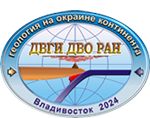The “puzzle” of the primary obsidian source in the region of Paektusan (China/DPR Korea) Популярные
Число скачиваний: 1329
popov_2019.pdf
Vladimir K. Popov, Yaroslav V. Kuzmin, Andrei V. Grebennikov, Michael D. Glascock, Jong-Chan Kim, Clive Oppenheimer, Sergei Y. Budnitskiy, Mi-Young Hong, Ju-Yong Kim
https://doi.org/10.1016/j.quaint.2018.12.028
Quaternary International 519 (2019) 192–199
Since the 1990s, a characteristic obsidian geochemistry has linked widespread archaeological assemblages spanning the Russian Far East, Korean Peninsula, and Northeast China. Referred to as PNK1, the source of this material has yet to be identified. As a contribution to solving this enduring puzzle, we report here analyses of a commercial specimen of obsidian exported from Chongjin in DPR (North) Korea. A combination of Neutron
Activation Analysis (NAA) and PotassiumeArgon dating enable us to compare this piece with a large obsidian database for Northeast Asia. We find that the “Chongjin sample” is identical to PNK1 lithics from archaeological collections. While the exact source of the “Chongjin sample” remains unknown, we can more confidently locate the primary source for PNK1 lithics in DPR Korea. Based on an exhaustive literature review of the geology and geochemistry of volcanic glasses and other volcanic rocks in the northern part of the Korean Peninsula, and drawing on our own unpublished data, we suggest that the PNK1 source is most likely located south of Paektusan Volcano. This corroborates the existing evidence for the long-range transport of the material.







